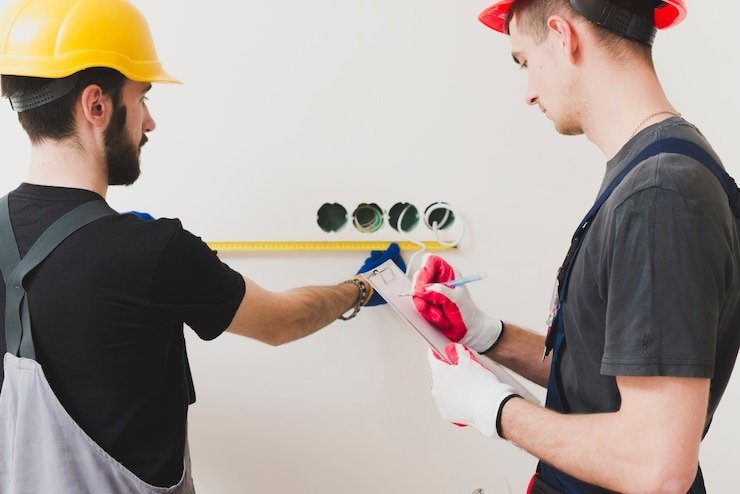How to Test, Fix, and Diagnose Circuit Breaker Issues Safely
Circuit breakers are essential safety devices in every home’s electrical system. They prevent fires, protect appliances, and stop dangerous electrical overloads. Understanding how to diagnose circuit breaker issues, replace a faulty breaker, and why it keeps tripping can help keep your home safe and your electrical systems functioning smoothly. This article will explore the common causes of circuit breaker problems, how to test a circuit breaker, and how to replace one safely.
How to Find a Break in an Underground Electrical Line
Why Does My Circuit Breaker Keep Tripping?
If your circuit breaker keeps tripping, it’s doing its job by protecting your home from potential electrical hazards. However, persistent tripping is a clear sign that a problem needs attention.
- Overloaded Circuit
- An overloaded circuit is one of the most common causes of a tripping breaker. This happens when too many devices are plugged into the same circuit, drawing more current than the circuit can handle. For example, running a space heater, a microwave, and other high-energy appliances on one circuit can exceed the breaker’s capacity, causing it to trip.
- How to Fix: To solve this issue, try redistributing your electrical load by unplugging some devices and using different circuits for high-power appliances. If overloading is a recurring problem, installing a new circuit or upgrading the existing one might be necessary.
- Short Circuit
- A short circuit occurs when a “hot” wire comes into contact with a neutral wire, creating an excessive current flow. This is a dangerous condition that can cause the breaker to trip immediately.
- How to Fix: If you suspect a short circuit, it’s best to call an electrician to inspect the wiring and address the problem. Short circuits can lead to fire hazards and should not be ignored.
- Ground Fault
- A ground fault occurs when a hot wire touches a grounded surface or a ground wire, causing a surge of electricity that trips the breaker. Ground faults are common in damp areas such as bathrooms, kitchens, and outdoor spaces.
- How to Fix: Installing Ground Fault Circuit Interrupters (GFCIs) in these areas can help detect and prevent ground faults. If a ground fault trips your breaker, you may need a professional to find the source of the problem and fix it.
- Faulty Appliances
- Sometimes, the breaker trips because of a problem with an appliance plugged into the circuit. Old or malfunctioning appliances can draw too much current or have internal electrical faults.
- How to Fix: Unplug all devices on the tripping circuit and test them individually to find the faulty appliance. If an appliance is causing the issue, it may need to be repaired or replaced.
- Worn-Out Circuit Breaker
- Over time, circuit breakers can wear out or malfunction, causing them to trip more quickly than they should. If your breaker is old, it might need to be replaced.
- How to Fix: A replacement might be necessary if you’ve ruled out other causes and your breaker still trips. Call a licensed electrician to assess whether the breaker is faulty.
How to Replace a Circuit Breaker
If you’ve determined that your breaker is faulty, replacing it can be a relatively simple task but requires caution. Here’s a step-by-step guide on how to replace a circuit breaker:
- Turn Off the Power. Before working on any electrical component, ensure the power is off. Please turn off the main breaker to shut off the electricity in your home, making it safe to handle the breakers.
- Remove the Panel Cover. Use a screwdriver to remove the screws securing the breaker panel cover. Avoid exposing live wires if the main breaker hasn’t been turned off.
- Identify the Faulty Breaker. Locate the breaker you need to replace. Breakers frequently tripping, visibly damaged, or overheating are likely candidates for replacement.
- Disconnect the Wires Once you’ve identified the faulty breaker, use a screwdriver to loosen the screw that holds the wire in place on the breaker. Pull the wire away gently, using pliers if necessary, and avoid damaging the insulation.
- Remove the Old Breaker. Most breakers snap in and out of the panel. Pry the faulty breaker out by pulling it toward you. Be gentle but firm to avoid damaging the breaker panel.
- Install the New Breaker Insert the new breaker into the empty slot, aligning it carefully with the other breakers. Push it into place until it snaps securely. Make sure the amperage rating matches the original breaker to avoid electrical problems.
- Reconnect the Wires Reattach the wire to the terminal on the new breaker, ensuring the connection is tight and secure.
- Replace the Panel Cover After you’ve finished the installation, carefully put the panel cover back on and screw it into place.
- Turn the Power Back On. Flip the main breaker back to the “on” position, then switch on the newly installed breaker. Test the outlets and appliances on that circuit to ensure everything works correctly.
How to Test a Circuit Breaker
Test your circuit breaker using a multimeter or voltage tester if it malfunctions. Here’s how to do it:
- Turn Off the Main Power. Turn off the main breaker to cut power to the panel for safety.
- Use a Multimeter Set the multimeter to measure continuity or voltage. Place one probe on the breaker terminal and the other on the neutral bar. A single-pole breaker should read around 120 volts, while a double-pole breaker should read 240 volts. If the reading is zero or inconsistent, the breaker is likely faulty and needs replacement.
- Check for Continuity: Use the multimeter to check for continuity. Place the probes on the breaker’s terminal screw and the contact point where the breaker connects to the busbar. If the multimeter doesn’t beep, it indicates a lack of continuity, suggesting the breaker is faulty.
- : You can also use a non-contact voltage tester to detect whether voltage is present. Hold the tester near the breaker terminal and see if it beeps or lights up. If no voltage is detected, the breaker may need to be replaced.
Final Thoughts
Dealing with circuit breaker issues, whether troubleshooting, testing, or replacing, requires caution and attention to detail. If you’re comfortable handling basic electrical tasks, you can diagnose and fix common breaker problems yourself. However, if you’re unsure, hiring a professional electrician is always a good idea to ensure everything is done safely.
A frequently tripping breaker could signal anything from an overloaded circuit to faulty wiring; in some cases, the breaker might need to be replaced. Always take safety precautions, such as turning off the main power and using proper tools, before working on your electrical panel.
Common Questions:
Can I test a circuit breaker without turning off the main power?
It’s not recommended. Testing with the power on can be dangerous. Always turn off the main power before testing or replacing a breaker.
How do I know if my breaker is overloaded?
If your breaker trips frequently when you plug in or turn on multiple devices, it’s likely overloaded. Try redistributing appliances across different circuits.
Is it safe to replace a breaker myself?
If you follow proper safety precautions and understand the process, replacing a breaker can be done safely. However, it’s best to call an electrician if you’re unsure or inexperienced.






